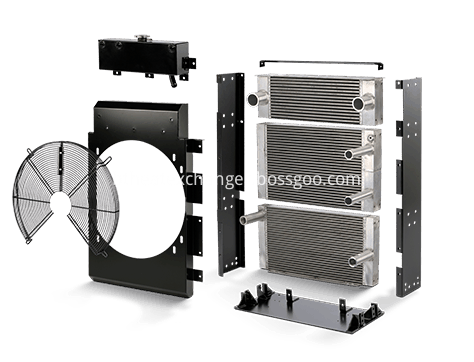BCS superconductivity theory gives a perfect explanation of the superconducting mechanism of traditional superconductors such as metals and alloys. The decisive experimental verification of BCS superconductivity theory reveals that the electron pairings in traditional superconductors are realized through the exchange of phonons as a medium, which is derived from the tunneling energy spectrum experiment to determine the function of superconducting pairing correlation spectra. Superconducting pairing correlation spectroscopy functions provide key fingerprinting characteristics that identify the interactions or intermediates that lead to electron pairing, and the experimental determinations are the key to understanding the superconductivity mechanism. The supercritical temperature of superconducting copper oxide superconductors and d-wave pairing symmetry and other singular properties of the traditional BCS superconductivity posed a challenge. After nearly three decades of theoretical and experimental research, the superconducting mechanism of copper oxide high temperature superconductors is still not reached consensus. Due to the strongly anisotropic electronic structures and d-wave superconducting energy gaps of copper oxide high-temperature superconductors, the method of obtaining superconducting pairing correlation spectra by traditional tunneling spectroscopy experiments is no longer simple and convenient. Because of its ability to directly discern momentum, it is considered that angle resolved photoelectron spectroscopy is the most promising new method to obtain the superconducting pairing correlation function in copper oxide high temperature superconductors. For a long time, this work has been difficult to carry out due to two challenges. First, the measurement of angular resolution photoelectron spectroscopy has to meet extremely stringent ultra-high precision requirements. Second, it has to be developed that the data obtained by angular resolution photoelectron spectroscopy Related theory and numerical analysis method of superconducting pairing correlation function in d - wave superconductor.
Dr. JinMo Bok, Associate Researcher Yu and Zhang Wentao, He Junfeng and Zhang Yu-Xiao from the Institute of Physics, Chinese Academy of Sciences / Beijing State Key Laboratory of Condensed Matter Physics (CRP) at the State Key Laboratory of Superconductivity at Beijing Polytechnic Institute and Chandra Professor Varma and Professor Han-Yong Choi of Sungkyunkwan University in Korea have developed ultra-high-precision vacuum angle-resolved photoelectron spectroscopy using the self-developed vacuum ultraviolet laser and developed related theoretical and numerical methods. After nearly seven years For the first time, the pairing correlation spectrum function of high temperature superconductors of copper oxide has been successfully resolved. Important progress has been made in understanding the electronic matching mechanism of high temperature superconductors.
The use of a vacuum UV laser angle-resolved photoelectron spectroscopy system has made it possible to obtain ultra-high-precision system measurements of Cu22 high temperature superconductor Bi2212 at different temperatures and different momentum spaces (Figure 1). Through the self-consistent fitting analysis of diagonal resolved photoelectron spectroscopy data of d-wave superconducting Green's function (Figure 2), the normal self-energy and self-energy of the Bi2212 high-temperature superconductor can be successfully extracted (Figure 3). According to the Eliashberg theory and the maximum entropy method, the normal Eliashberg function and the pairing Eliashberg function and the relationship between the momentum and the temperature are obtained by means of inversion. ). The prominent experimental results include: (1) Similar non-energy (ie, ~ 50 meV) structures, both normal and paired correlation functions, contain similar energetic energies that evolve with no energy, indicating that copper oxide high temperature superconductors (2) In the low-temperature superconducting state, the normal correlation function and the pairing correlation function tend to be the same. For the first time, experiments have been provided that can lead to normal self-energy and pairing self-energy (3) The normal correlation spectral function does not evolve with the momentum, revealing a core paradox of Cu-Cu high-temperature superconductors: the normal self-energy and momentum generated by the same fluctuations have nothing to do with, but (4). According to these quantitatively determined pairing correlation spectral functions, the critical superconductivity temperature is basically the same as the superconducting temperature of the experimental materials.
This work, for the first time, directly reveals the energy and momentum characteristics of the superconducting driven excitation spectra in high-temperature copper oxide superconductors. By comparing with the existing co-mediator models (phonons, spin fluctuations, Hubbard model fluctuations and loop currents Order fluctuations, etc.) for a detailed comparison, the critical information for the identification and establishment of high-temperature superconducting matching mechanism and further theoretical studies provide a decisive key. At the same time, the experimental techniques, theoretical studies and numerical methods developed in this work have opened up a unified and effective way for studying the superconductivity of other superconductors. Commenting on the work, internationally renowned superconductivity physicist Lev Gorkov said "This article is a bold and successful attempt to obtain relevant electron-electron interactions directly and experimentally. Their superb research approach is to Studying the superconducting mechanism of other strongly related systems opens up new prospects. "
Related research findings are published in the recent Science Advances [JinMo Bok et al., Quantitative determination of pairing interactions for high-temperature superconductivity in cuprates, Science Advances 2, e1501329 (2016).]
The above research work was supported by the funds of National Natural Science Foundation of China (11190022 and), Ministry of Science and Technology and the leading B project of CAS.
Figure 1. Ultrahigh-precision vacuum ultraviolet laser angle-resolved photoelectron spectroscopy measurements of high temperature superconductor Bi2212 (Tc = 89K).
Aluminum alloys used in the manufacture of various types of elements is a strong, versatile, durable and aesthetic material. These properties can be used in realizing various types of projects. Our Aluminum Profiles mainly include aluminum tanks, aluminum bars, aluminum tubes, aluminum row, aluminum flanges, Aluminum connection etc. They are widely used in Aluminum plate fin heat exchangers and served for Agriculture &Forestry Machinery, auto&vehicle, compressor, construction machinery, power generator and more.

Aluminium U-Profile Extruded Tank, Aluminum Casting Tank, Radiator Tanks, Intercooler Tanks, Charge Air Cooler Tanks, Aluminum Bars, Aluminum Tubes, Aluminum Row, Aluminum Flanges, Aluminum Connection
Wuxi Better Technology Co., Ltd , https://www.btheatexchanger.com